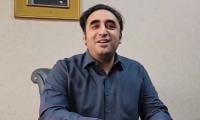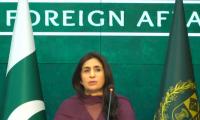The year 2015 proved to be a successful year of cooperation among countries to end global poverty by 2030 without compromising the health of the planet.
In March 2015, the 3rd UN conference on Disaster Risk Reduction (DRR) held in Sendai, Japan, led to the Sendai Framework for Disaster Risk Reduction (SFDRR); the Paris Climate Agreement in December 2015, where the world pledged to limit global warming to 1.5 degrees celsius; and the UN Summit on Sustainable Development in New York on September 27, 2015, where world leaders gathered to agree on the next set of goals, famously known as the Sustainable Development Goals (SDGs), which replaced the existing Millennium Development Goals (MDGs) from January 1, 2016.
These agreements are collectively referred to as the post-2015 agenda and can help address inequalities and promote a sustainable universal model of development, in consonance with the pressing climate change commitments.
The SDGs include the following goals: poverty, food, health, education, women, water, energy, economy, infrastructure, inequality, habitation, consumption, climate, ecosystems, marine ecosystems, institutions and sustainability.
Pakistan is projected to become a middle-income country by 2030, with an estimated per capita income of $9,000, almost zero poverty, resilience to climate-induced disasters and the ability to provide food for an estimated 215 million population, as a result of the effective implementation of the SDGs.
These agreements collectively offer a once-in-a-generation opportunity to end extreme poverty, create climate resilient development and avoid dangerous levels of climate change by committing to zero-net carbon emissions. All major agreements made in 2015 acknowledge the impact a healthy environment has in addressing development challenges, especially poverty, climate change, food security, water scarcity, reducing vulnerabilities to disasters, ensuring health, and sustainable and resilient cities.
Unlike the MDGs, which focused only on the developing world, the SDGs are applicable to all countries, asking every UN member state to perform its role in implementing these goals. Every country, including Pakistan, has committed to define its development agenda, socio-economic policies, and actions towards low carbon pathways over the next 15 years, to achieve a sustainable world where people can enjoy healthy lifestyles without compromising the sustainability of the planet’s health.
The SDGs attempt to address all dimensions of sustainable development – economic, social and environmental. Through the SDGs, the global community aims to address environmental concerns.
The future of our planet depends on how well we collectively manage to implement these new global goals. The SDGs provide a useful blueprint to every country to end poverty, promote healthy lives and well-being for all, end hunger for all, and ensure availability and sustainable management of water and energy for all. The goals also provide conceptual guidance to decision-makers towards achieving these SDGs and creating a sustainable world for our future generations.
The SDGs are more ambitious than the MDGs and cover a broad array of interconnected issues, from economic growth to social issues to global public goods. An ambitious plan for financing and implementation is, however, needed to realise this vision.
The urgent need to implement the SDGs lies in the fact that globally almost one billion people earn less than $1.25 a day, and more than 800 million people don’t have enough food to eat. Likewise, millions are exposed to extreme weather events, coupled with rapid climatic changes, making them more vulnerable with every passing year. There’s sufficient evidence available to suggest that climate change is a bigger threat than any other challenge in human history.
Similar findings have emerged from the MDGs progress reviews, clearly suggesting that achieving environmental sustainability and human wellbeing is an uphill task, due to climate change. Other barriers, such as fossil fuel based economic growth, unsustainable consumption, income inequality, unplanned urbanisation and deforestation continue obstructing sustainable development for all.
It is estimated that the cost of eradicating extreme poverty globally will be about $66 billion per year.
Domestic resource mobilisation and official development assistance are the key components of development finance. Moreover, country leadership is fundamental to the success of financing the post-2015 agenda. Private-sector financing will also be needed.
A study by the Leadership for Environment and Development (LEAD) Pakistan, titled ‘Translating Sustainable Development Goals at the Country Level’, highlights that implementing the SDGs will be an uphill task, especially since the 18th Amendment has devolved multiple sectors, such as health, environment, agriculture and education to the provinces. Also, a reasonable understanding of the SDGs needs to be created at the provincial, district and union council levels. The federal government should get these implemented at the provincial levels to steer the country towards low-carbon development. Furthermore, the study also suggests the federal government should engage the provinces to change their perception of the SDGs as an external development agenda.
Better interaction among government departments for knowledge-sharing on the SDGs, increased efforts are needed at the federal level to create synergy between the provinces. The Council of Common Interests (CCI) can also serve as an effective forum through which provinces can be engaged on the SDGs.
Before Pakistan begins its SDGs implementation, it needs to do some thorough stocktaking in the light of the SDGs to see what it’s already doing, followed by prioritisation of SDGs according to circumstances. The next step should be assessment of current data architecture and then merging that with required data and reporting needs, and finally incorporating the SDGs into development planning and budgeting. This will take approximately three years, and Pakistan will be able to generate its first report on the SDGs in 2019.
A central coordination mechanism is needed for the SDGs, along with public awareness and greater activism by the civil society to create conducive conditions in which information is available to all to help generate policy action by the government.
Once we get our house in order, we will be able to tap into the numerous opportunities and resources that are being made available to the developing countries, which demonstrate their seriousness in promoting sustainable development across all segments of society. It is in our national interest to kick-start implementation of the SDGs.
The writer is a freelance contributor.
Email: s.m.abubakar@hotmail.com
Twitter: @SyedMAbubakar
A woman walks past a building of the International Monetary Fund. — AFP/FileThe annual and spring meetings of the...
Late Benazir Bhutto's daughter Asifa Bhutto Zardari addresses the Christian community in Bihar Colony on January 23,...
Representational image. — PexelsWater is an important scarce natural resource that is required for several everyday...
Pakistani employees of online marketplace company Kaymu at work in Karachi. — AFP/FileThe true spirit of development...
India uses Afghanistan as a backstage area to carry out terrorist attacks against Pakistan
Another report by the Pakistan Institute of Peace Studies states that 78 per cent of attacks have been carried out by...







